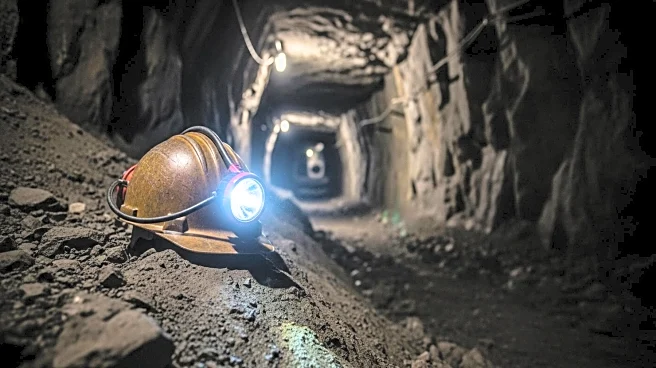What's Happening?
Aurubis, Europe's largest copper smelter, has announced a record high premium of $315 per metric ton for refined copper for the year 2026. This premium is an increase of 38% from the previous rate of $228 per ton in 2025. The decision comes in response to fears of a copper supply shortage, which has driven London Metal Exchange copper prices to a 16-month high of $10,800 per ton. The market has been affected by disruptions at major copper mines, including Freeport-McMoRan's Grasberg mine in Indonesia, which declared force majeure following a deadly mudslide. Other disruptions have occurred at the Kamoa-Kakula mine in the Democratic Republic of Congo and Chile's El Teniente mine.
Why It's Important?
The increase in copper premiums by Aurubis highlights significant concerns over copper supply shortages, which could have wide-reaching implications for industries reliant on copper, such as power and construction. The disruptions at major mines and the subsequent supply deficit could lead to increased costs for manufacturers and builders, potentially affecting project timelines and budgets. Analysts have adjusted their forecasts, predicting the largest supply deficit since 2004, which could further drive up prices and impact global markets. Companies dependent on copper may need to explore alternative materials or adjust their procurement strategies to mitigate the impact of rising costs.
What's Next?
As the copper supply deficit looms, stakeholders in the copper industry, including manufacturers and construction firms, may need to reassess their supply chains and consider strategic partnerships or investments in alternative materials. The ongoing disruptions at key mines could prompt further adjustments in market forecasts and pricing strategies. Additionally, governments and industry leaders might explore policy measures to stabilize the market and ensure a steady supply of copper to critical sectors.
Beyond the Headlines
The copper supply shortage and premium increase could have long-term implications for sustainability and innovation in industries reliant on copper. Companies may invest in research and development to find more sustainable and cost-effective alternatives to copper, potentially leading to advancements in material science. Furthermore, the situation underscores the importance of geopolitical stability and environmental management in resource-rich regions, as disruptions can have global economic repercussions.










